Different Telescope Types for Amateur Astronomers
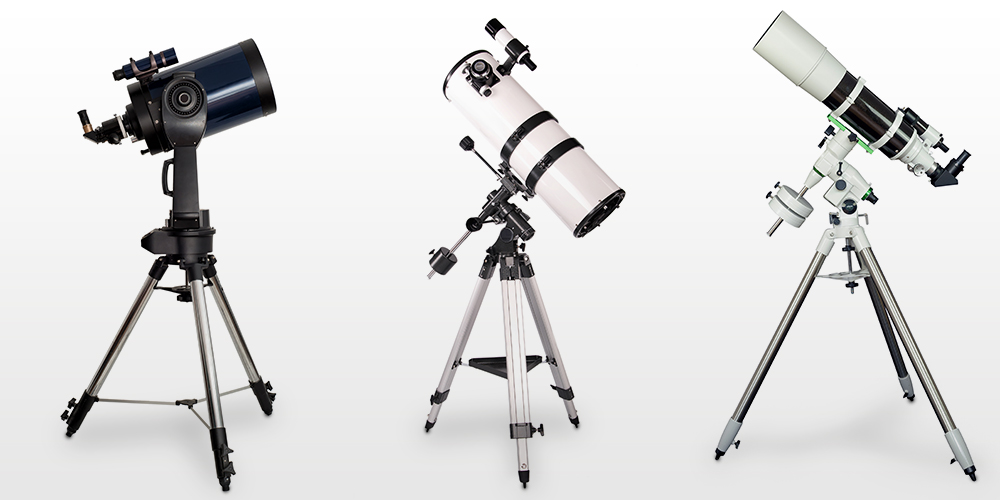
There are many different telescope types, actually the term “telescope” in fact combines two optical systems, reflectors and refractors, each with its strengths and weaknesses, depending on your needs. In each case, the optical system is comprised of an objective and an eyepiece, although the eyepiece is sometimes able to be replaced by a regular camera or an astrophotography camera.
The objective captures the light and concentrates it in a point called the focus. It is there that the eyepiece is located, an optical device with a series of lenses. The observer looks into the eyepiece, which enlarges the image.
The larger the diameter of the objective, the easier it will be to capture light, and as a result, the better an observer will be able to see fainter objects. On the other hand, the further the focus is positioned from the objective, the more the image is magnified. We refer to the distance that separates the lens from the focus, the instrument’s focal length. The greater the instrument’s focal length, the stronger its magnification will be. Unfortunately, the longer the focal length, the darker the image will appear. If you want to observe a galaxy that is far away and diffuse, first and foremost you will need an objective with a substantial diameter. Conversely, if you want to observe the details of a luminous object, for example, the craters on the surface of the Moon or the rings of Saturn, you will benefit from having a long focal length.
Read also: Telescopes for Beginners
Refractors
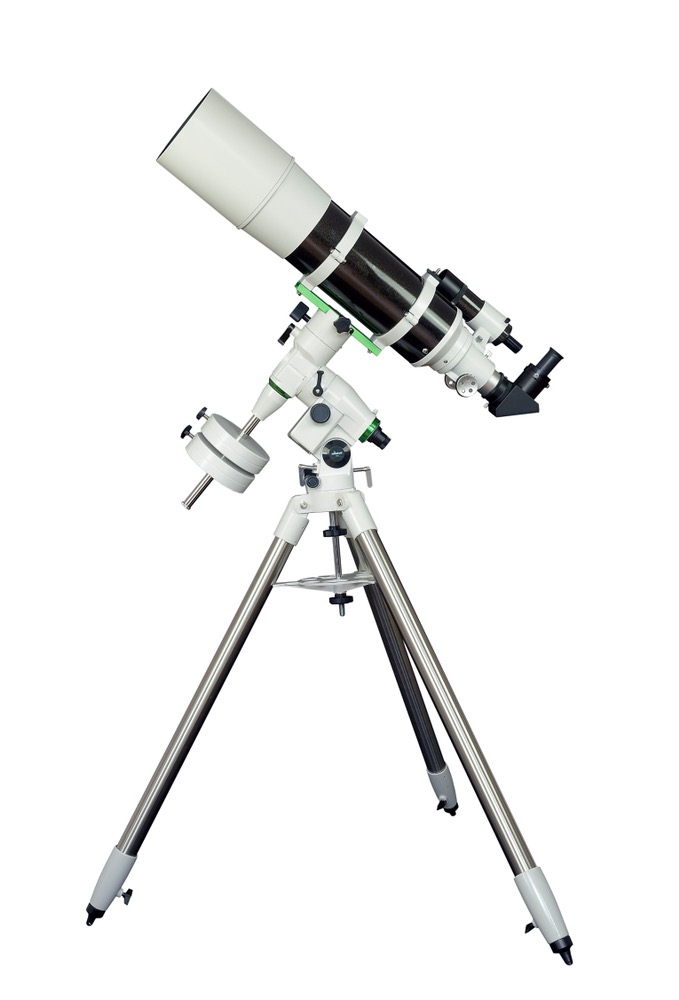
Refracting telescopes all function on the same principle, but the quality of the lenses varies and consequently, so does the cost of the instrument. The refractor is essentially a spyglass for which the concept was invented in the Netherlands in 1608. It was the Italian mathematician, Galileo, who first had the idea to use it as an instrument for observing the sky. He improved upon the Dutch spyglass and used it to make discoveries that revolutionized astronomy.
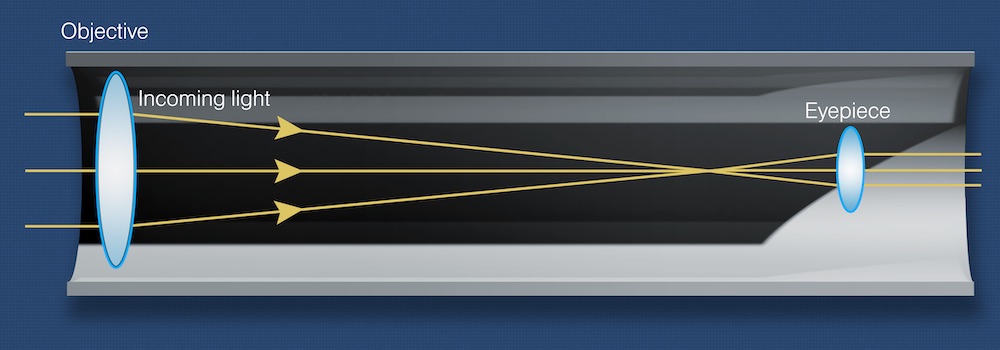
In a refracting telescope, the objective is a lens, and in the most sophisticated instruments, many lenses stacked together. The objective is situated at one extremity of the tube, and the focus at the other.
Reflectors
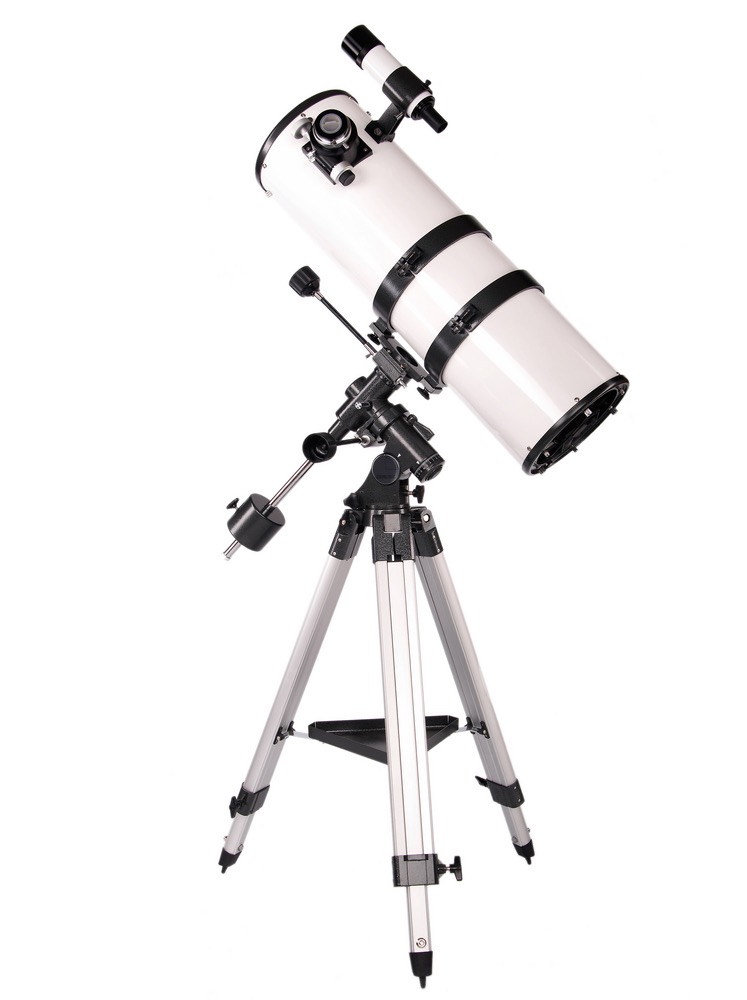
In a reflecting telescope, the objective is not actually a lens, but rather a mirror. And, it is not a flat mirror, but a curved mirror that fulfills exactly the same function as a lens, this is to say that it concentrates the light into a focal point. With few exceptions, before reaching this point, the light is diverted by a secondary mirror (which can be flat, but doesn’t have to be), so that the eyepiece, and consequently the observer, don’t block the path of light. By contrast to refracting telescopes, there are different types of reflectors. The first of its kind was invented by Sir Isaac Newton in 1668 and bears his name: the Newtonian telescope. It is a simple and effective instrument, the primary mirror is at the back of a tube and the secondary mirror, which is flat, is at the opening of the tube.
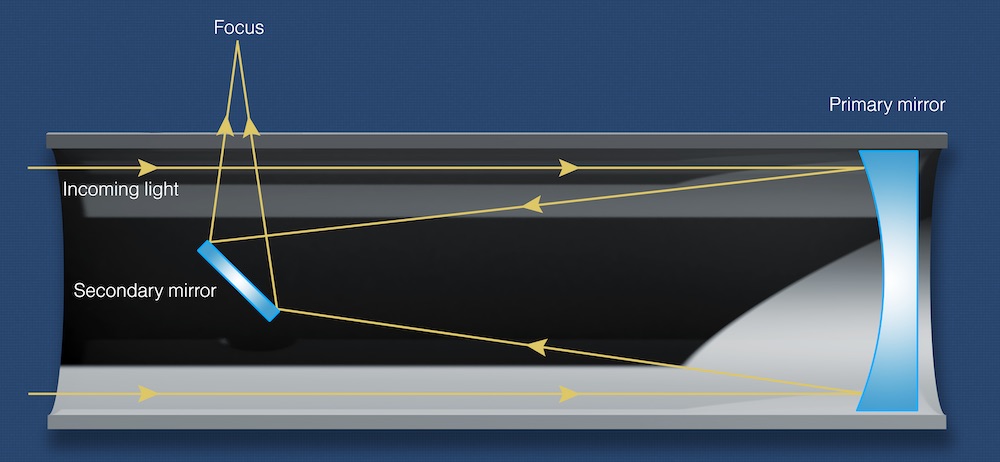
This secondary mirror reflects the light back at a 90˚ angle and so the eyepiece is placed on the side of the tube. The Newtonian telescopes are very popular among amateur astronomers because of their high quality optics and low manufacturing cost by comparison to other types of telescopes. The Schmidt-Cassegrain telescopes are also very popular among amateur astronomers, although they are generally more expensive. The Schmidt-Cassegrain optical system is more complex than that of the Newton telescopes.

The primary mirror has a spherical curvature; it is a mirror that is easy to make, but which causes what is called a spherical aberration. It’s a matter of the distortion of the image caused by the fact that this geometry does not really concentrate all the rays of light at the same point, and consequently, there is no proper focus. To correct this optical aberration, a lens is placed at the entrance of the tube. At first glance, one might think that it is a thin glass plate, but it is actually a lens, precisely cut to correspond to the mirror with which it is paired. This optical component is called a corrector plate. Thanks to this plate, the image in a Schmidt-Cassegrain telescope is clear. However, if the corrector plate is damaged, the telescope becomes unusable; because it was cut for that particular mirror, it is unfortunately not possible to replace it with another without having to have it custom-made, which would be very expensive.
Finally, the last type of reflector that we will discuss in this article is the Maksutov telescope. It is a telescope that resembles the Schmidt-Cassegrain in that the principle is much the same except that the lens, which is called the meniscus corrector in this kind of telescope, one can easily see the curve with the naked eye. The Schmidt-Cassegrains and the Maksutovs are relatively equivalent optical systems. The advantage of the Schmidt-Cassegrain is that it is easy to manufacture its large-diameter optics, whereas in the Maksutov, the prices quickly start to rise as the size of the diameter increases.
In any case, these two types of telescopes have the advantage of combining the focal length in a compact tube, as the light captured by the primary mirror is reflected by the secondary mirror back toward the center of the primary mirror, which is pierced in the middle, and the focus is formed at the back of the telescope. On the one hand, the light therefore travels back and forth within the tube, thus virtually doubling its length; yet on the other hand, the secondary mirror is not flat, but rather convex and thus adds to the instrument’s focal length. If your curiosity has been piqued enough to browse an astronomical equipment seller’s offerings, you will possibly notice some hybrid models. You will see, for example, some Newtonian telescopes equipped with a corrector plate. This is because different optical systems have their advantages and their disadvantages, and some have been more adapted to certain uses than to others. The manufacturers therefore make choices and attempt to propose solutions that meet a variety of needs.







